Competition is a constant in any brand’s journey, and we understand how important it is to stay informed about what others are doing and how you measure up. With AI, there’s now a faster, more meaningful way to uncover insights. Through this article, we want to show just how much AI can improve the way you approach competitive analysis. We believe technology should be used wisely in the influencer marketing space, and that starts with understanding what it can do and how to apply it. We also highlight how HypeAuditor supports this process, because we want you to work with tools and guidance you can trust.
Competitive analysis has always been part of marketing, but AI takes it further. With the right tools, brands can go past the obvious metrics and gain deeper insights into what’s working for their competitors; as well as the reasons behind. This article outlines six ways AI improves competitive analysis and how to apply those insights.
As time goes by, brands are growing in both numbers and reach. With so many choices available, brands must work harder to stay relevant and win customers. However, competition isn’t a new challenge — back in 2020, 90% of companies reported that their industries had become more competitive over the past three years, with 48% noticing a significant increase. In today’s expeditious market, brands that don’t keep an eye on their competitors risk falling behind.
This competition becomes even more evident in the influencer marketing space. With the industry predicted to grow from $19.8 billion in 2024 to $31.2 billion by 2027, brands will face a more crowded market and struggle to capture their audience’s attention. Even now, 64% of marketers say they work with micro-influencers due to their higher engagement rates and cost-effectiveness. While many brands follow the same strategy, some manage to stand out, while the rest are left behind.
At this point, just knowing who your competitors are isn’t enough. Brands need to understand what their competitors are doing and track it as early as possible since trends and strategies shift speedily, even sometimes faster than brands can adapt. With competition getting tougher, sticking to traditional ways of tracking competitors can be too slow and less practical.
Given the situation, brands need to keep up by learning how artificial intelligence (AI) can help. AI can quickly process big amounts of data and find useful observations that would take much longer for humans to figure out; some of which were nearly impossible to gather manually. With AI, brands can track competitors in real time and get up-to-the-minute alerts about their moves, ensuring they don’t fall behind.
But how can brands use AI for competitive analysis in influencer marketing? Let us walk you through the best ways to do it. We'll also show you how HypeAuditor can handle these competitor analysis tasks.
Key takeaways
Brands can use AI to benchmark their own performance against market standards.
Engagement, influencer partnerships, content performance, and brand visibility can be compared across competitor campaigns.
Audience overlap analysis reveals shared or missed opportunities across influencer rosters.
Sentiment analysis uncovers how audiences are actually reacting to competitor content.
AI reveals emerging trends and high-performing content types faster than manual research.
What is AI in Competitive Analysis?
Competitive analysis is about understanding what other brands in the industry are doing: what’s working for them, what’s not, and how your brand stacks up. It helps brands measure their performance against competitors and spot things to improve. Traditionally, this process involved manually tracking competitors’ campaigns, marketing strategies, customer reviews, and product launches. While useful, it takes a lot of time and effort.
Using AI in competitive analysis means utilizing its smart technology to collect, sort, and analyze various information from different platforms. AI can track social media trends, detect customer reviews, monitor brand mentions, and analyze public sentiment; all of which help determine a brand’s position in the market.
Many companies now use AI technology in competitive analysis to gain data-driven insights that help them make decisions. A survey found that 76% of PR professionals stress the importance of AI and technology integration in business, which shows how essential technology has become in refining marketing strategies.
Traditional Competitive Analysis vs. AI-powered Competitive Analysis
Changes in the marketing industry also affect how brands analyze their competitors. Although brands have always done it, the emergence of digital marketing and influencer marketing has made it more complex and forced brands to adapt. Now that AI provides a faster and more accurate way, let’s see how it compares to traditional methods:
| Aspect | Traditional Method | AI-Powered Method |
|---|---|---|
| Data Collection | Tracks campaigns, influencer partnerships, and engagement manually. | Automatically monitors social media activity, brand mentions, and influencer content. |
| Cost | It takes time and manpower to manage. | May have a higher upfront cost but saves time and resources in the long run through automation. |
| Speed & Efficiency | It takes a long time, sometimes hours or days, to collect insights. | Analyzes large amounts of data in seconds. |
| Accuracy | Prone to human errors and outdated insights. | More precise and constantly updated. |
| Insight Depth | Relies on surface-level insights and may miss important trends. | Digs deeper into data to find patterns and trends that aren’t obvious at first. |
| Scalability | Difficult to analyze multiple competitors at once. | Can monitor and compare multiple competitors in real time. |
| Trend Detection | Depends on occasional research and manual tracking. | Spots trends early by analyzing data in real time. |
| Decision-making | Relies on fixed data and gut feeling. | Uses data-driven insights to make quick, informed decisions. |
6 Ways AI Enhances Competitive Analysis in Influencer Marketing
Keeping up with competitors in influencer marketing can be tricky, especially when you need to get a clear picture of how a brand collaborates with influencers. How much are they spending? How many influencers are they working with? Are their campaigns delivering good results and achieving ROI goals? These details are helpful for brands that are looking to understand successful competitor campaigns and improve their own strategies.
With AI, these "hidden" metrics can be estimated. Brand mentions can be tracked. Competitor activities can be monitored in real time. But how exactly can AI help brands do this? Here is how you can harness it to stay ahead.
1. Monitoring competitors activities through social media posts
Keeping track of your brand and your competitors’ on social media has always been important. Now, AI makes it much easier to prevent you from scrolling through feeds and tweets to monitor multiple accounts and hashtags. New campaign? New launch? New approach? You’ll never miss a thing.
AI-powered monitoring tools organize this data automatically so you always get the latest updates without manual effort. To do this, you’ll need any AI competitor analysis tools with a media monitoring feature.
 HypeAuditor, for example, has a Media Monitoring feature that tracks all the latest posts mentioning your brand or your competitors. Whether it’s new posts, UGC campaigns, or other types of content, this tool gathers everything into one place, so you can stay updated of what competitors or influencers are doing. This is because every post from their accounts is grouped in a custom feed, which keeps you informed at all times.
HypeAuditor, for example, has a Media Monitoring feature that tracks all the latest posts mentioning your brand or your competitors. Whether it’s new posts, UGC campaigns, or other types of content, this tool gathers everything into one place, so you can stay updated of what competitors or influencers are doing. This is because every post from their accounts is grouped in a custom feed, which keeps you informed at all times.
This feature continuously scans Instagram, YouTube, and TikTok. You can even customize the feed to track specific accounts, hashtags, or keywords. It also helps you see what hashtags competitors are using and how their audience is engaging with them.
2. Analyzing sentiment analysis
When measuring campaign success, engagement numbers alone don’t tell the full story. Brands also need to know how people feel about a competitor’s posts and campaigns. Audience perception builds a brand’s reputation, and understanding it can make all the difference. This is where AI helps brands get a clearer picture of audience perception.
AI uses Natural Language Processing (NLP) to analyze reviews, comments, customer experience, and discussions to determine whether a brand’s campaign or product is well-received. It can also track how people see your competitors, which helps you refine influencer marketing strategy to present a better brand image.
 HypeAuditor considers sentiment analysis one of the key metrics to track. This feature doesn’t just help brands evaluate influencers before collaborating; it also allows them to check their own sentiment score or that of their competitors. The score shown is based on the types of comments people leave on social media accounts, and it is converted into a percentage (1-100%) as a reflection of how the audience perceives the brand.
HypeAuditor considers sentiment analysis one of the key metrics to track. This feature doesn’t just help brands evaluate influencers before collaborating; it also allows them to check their own sentiment score or that of their competitors. The score shown is based on the types of comments people leave on social media accounts, and it is converted into a percentage (1-100%) as a reflection of how the audience perceives the brand.
By tapping into sentiment analysis, brands can make better judgment by ensuring they collaborate with influencers who have a strong, positive reputation while also keeping an eye on how their own brand is perceived.
3. Benchmarking your brands against competitors
Knowing where your brand stands compared to direct competitors is key to improving your marketing approach. Fortunately, you don’t have to manually track engagement, reach, follower growth, or campaign performance. AI tool handles this task by providing detailed insights based on customized time periods to help you see where your brand excels.
Here’s what AI can benchmark in influencer marketing:
Engagement metrics
Influencer partnerships
Brand mentions and visibility
Content performance
 HypeAuditor makes this process easier with its Competitor Insights feature, which allows side-by-side brand comparisons. You can quickly check how your brand stacks up against competitors, track historical performance trends, and even assess your market share in the industry. It even provides a leaderboard that ranks brands based on influencer marketing performance, including campaign reach and efficiency.
HypeAuditor makes this process easier with its Competitor Insights feature, which allows side-by-side brand comparisons. You can quickly check how your brand stacks up against competitors, track historical performance trends, and even assess your market share in the industry. It even provides a leaderboard that ranks brands based on influencer marketing performance, including campaign reach and efficiency.
Additionally, the tool identifies top-performing content from the past month. This helps you analyze which posts generated the most engagement through comments and likes. As a result, you will be able to observe, adjust, and tweak your content strategy based on what’s working and give you a better chance of improving your campaign results.
4. Comparing competitors head-to-head
Comparing brands together at once is the easiest way to see which ones you should learn from or keep an eye on. Doing this manually takes a lot of time, but AI can generate comparisons using the latest data across multiple metrics in just minutes.
Through these comparisons, brands don’t just learn from successful campaigns, but also from their failures. If a campaign underperforms or receives negative feedback, brands can take note, analyze what went wrong, and avoid making the same mistakes.
Checking out competitors' influencer marketing strategies helps brands find ways to stand out. Brands can take a different approach, be more innovative, and position themselves as pioneers in specific types of campaigns as a result of spotting gaps in the market.
 HypeAuditor’s Competitor Comparison Reports is a great example of how AI-powered tools can help brands stay in front. These reports provide everything a marketer needs to know: content insights, campaign activities, trending hashtags, and even top-performing influencers. This means brands don’t just learn how to compete strategy-wise, but also discover new influencers who align with their brand, so they can consider collaborating with these influencers or finding similar ones to avoid overlapping with competitors.
HypeAuditor’s Competitor Comparison Reports is a great example of how AI-powered tools can help brands stay in front. These reports provide everything a marketer needs to know: content insights, campaign activities, trending hashtags, and even top-performing influencers. This means brands don’t just learn how to compete strategy-wise, but also discover new influencers who align with their brand, so they can consider collaborating with these influencers or finding similar ones to avoid overlapping with competitors.
5. Checking how the competitors’ influencers perform
Not all influencers deliver great results. Your competitors may seem confident in their choices, but why not take a closer look? Here’s where you’ll need AI to diligently gather every information related to their influencers’ performance. Once again, you can use this data to stay competitive by avoiding underperforming influencers and making smarter collaboration choices.
When analyzing the influencers your competitors work with, you can look at the influencer tiers they use (nano, micro, macro, mega) to determine which tiers bring in the best results. Looking at this data will help you decide how to allocate your budget more effectively. At the same time, checking the types of influencers your competitors work with might reveal new niches or audience groups that your brand can tap into for your own campaigns.
 Other than comparing multiple brands at once, you can also analyze a direct competitor individually. For example, HypeAuditor’s Mention Analytics tool provides extensive and actionable insight into influencer performance. It tracks the number of influencers working with a brand, their mention activity, audience quality, and whether their posts mentioning competitors are sponsored or organic.
Other than comparing multiple brands at once, you can also analyze a direct competitor individually. For example, HypeAuditor’s Mention Analytics tool provides extensive and actionable insight into influencer performance. It tracks the number of influencers working with a brand, their mention activity, audience quality, and whether their posts mentioning competitors are sponsored or organic.
If you want to stay updated on a specific competitor strategy, you can subscribe to Weekly Mention Reports to receive regular updates. This way, you’ll never miss any moves from your biggest rival.
6. Estimating the budget and impact of competitors’ influencer campaigns
When you know how much your competitor spent on influencer marketing and the impact they received, you get a clearer picture of their return on investment. This gives you an advantage: being able to analyze a real case study without spending a dime. More importantly, it helps you avoid overspending and improve cost-effectiveness by estimating how much competitors are investing. If their strategy is delivering good results, it could be a strong indicator to apply similar tactics to your next marketing campaign (with some adjustments, of course).
AI enables brands to study every influencer marketing performance, even without direct access to their budgets and campaign results. It’s because AI extracts meaningful insights from publicly available data, then makes calculated estimations. By analyzing competitor budgets, content performance, and audience engagement, AI can even predict the estimated ROI of their influencer campaigns.
 HypeAuditor’s Competitor Analysis feature gives brands an easy way to check detailed reports on their competitors and their latest campaigns. Valuable metrics include estimated budget, estimated earned media value (EMV), cost per engagement (CPE), and share of paid mentions. Besides showing metrics, the report also evaluates cost efficiency and provides a detailed breakdown of post activity by day and time, giving brands a deeper understanding of how competitors allocate their resources.
HypeAuditor’s Competitor Analysis feature gives brands an easy way to check detailed reports on their competitors and their latest campaigns. Valuable metrics include estimated budget, estimated earned media value (EMV), cost per engagement (CPE), and share of paid mentions. Besides showing metrics, the report also evaluates cost efficiency and provides a detailed breakdown of post activity by day and time, giving brands a deeper understanding of how competitors allocate their resources.
Looking Ahead
To stand out in influencer marketing, brands need more than just knowing their competitors; they need to understand what’s working and what’s not. AI helps by tracking influencer collaborations, spotting market trends, and estimating budgets, so brands can learn from others without having to experience the trial and error.
To make the most out of competitive analysis with AI, you can start with these:
The more visibility you have, the fewer blind spots you’ll carry into your next campaign.
Vet rival influencer lists before signing new talent to avoid overlap and uncover fresh niches.
Review sentiment scores weekly to spot mood shifts before they cascade into a trend.







